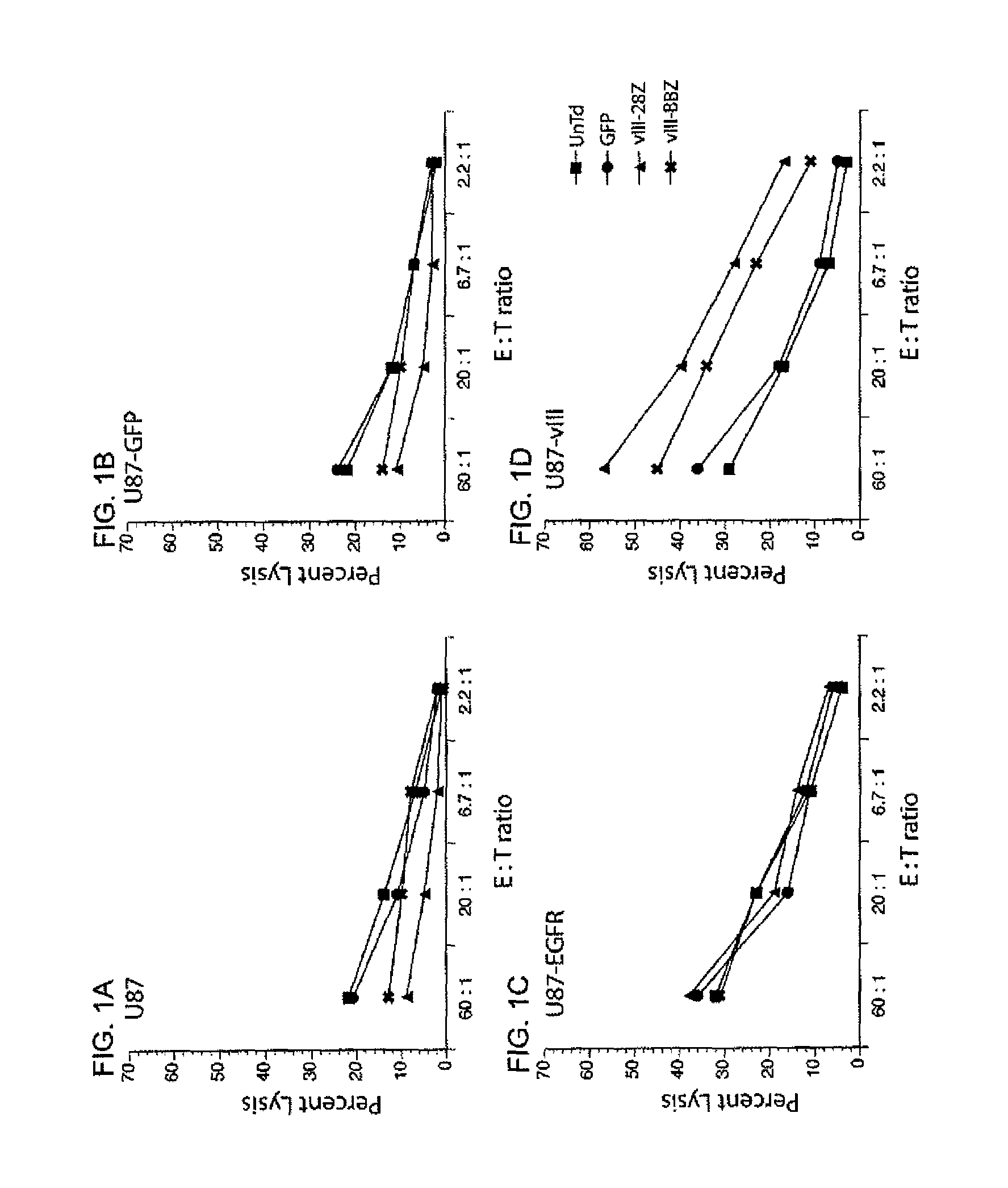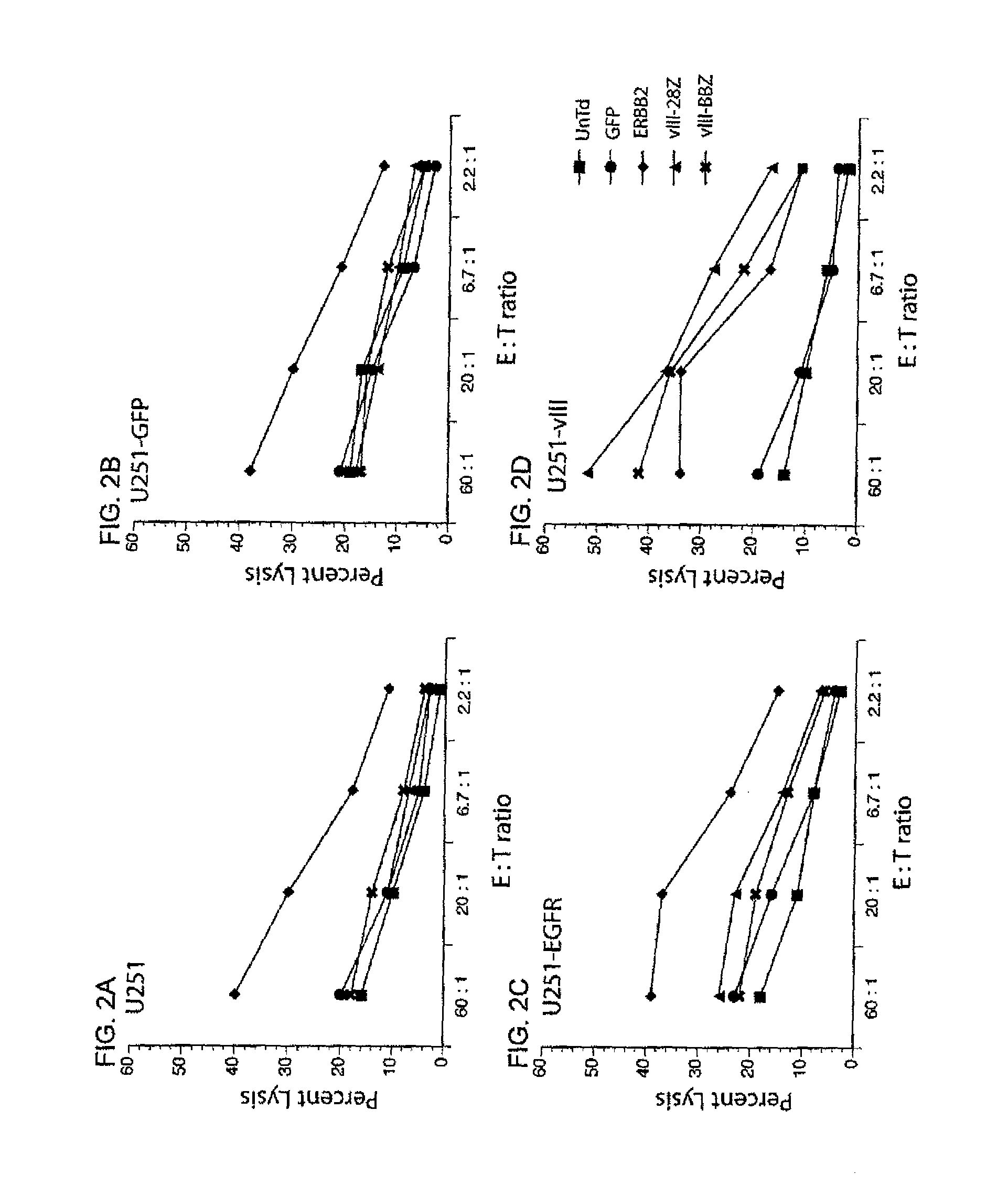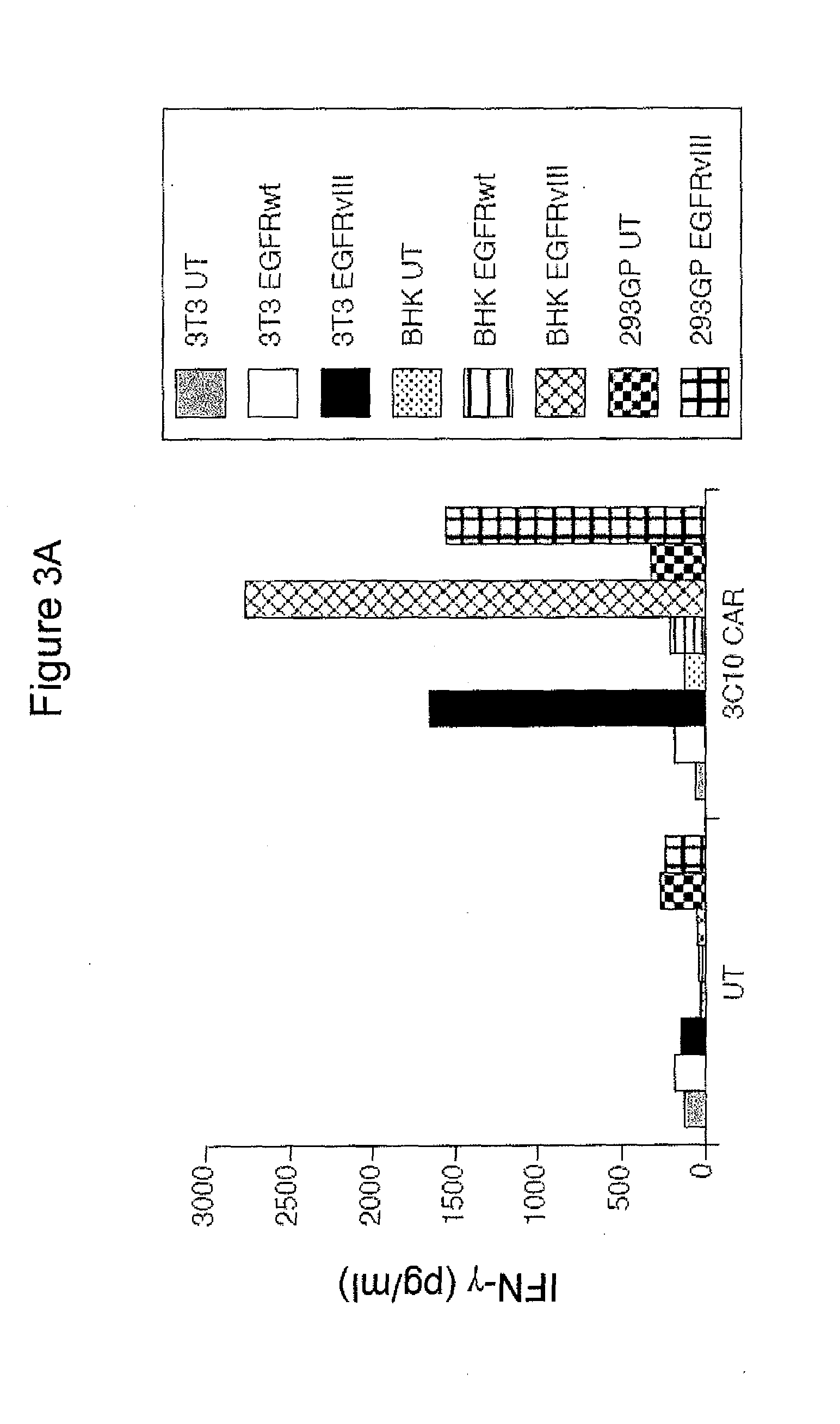Anti-epidermal growth factor receptor variant iii chimeric antigen receptors and use of same for the treatment of cancer
- Summary
- Abstract
- Description
- Claims
- Application Information
AI Technical Summary
Benefits of technology
Problems solved by technology
Method used
Image
Examples
example 1
[0110]This example demonstrates that a CAR comprising SEQ ID NO: 10 (h139Ab-hCD828BBZ) or SEQ ID NO: 11 (h139Ab-hCD28Z) produces IFN-gamma following co-culture with EGFRvIII engineered target cell lines.
[0111]Chimeric antigen receptors targeting EGFRvIII were produced by combining single chain antibody sequences from 7 different anti-EGFRvIII antibodies to the T cell signaling domains of CD28 and CD3zeta. A total of 9 different constructs were assembled (in 2 constructs the order of the VL and VH were switched) based on murine antibodies 3C10, MR-1, Y10, L8A4, and human antibodies 131, 139, and 13.1.2, which were inserted into the γ-retroviral vector MSGV1. The expression of each construct was tested by transducing peripheral blood lymphocytes (PBL) and fluorescence-activated cell sorting (FACS) analysis using an anti-Fab specific reagent (or protein L in later experiments). Three of the nine vectors constructed reproducible demonstrated CAR expression in transduced PBL, specificall...
example 2
[0115]This example demonstrates that a CAR comprising SEQ ID NO: 10 (h139Ab-hCD828BBZ) or SEQ ID NO: 11 (h139Ab-hCD28Z) specifically lyses cell lines engineered to express the mutant EGFRvIII.
[0116]The ability of EGFRvIII CAR engineered T cells to lyse target cells in a standard 51Cr-release assay was next determined (FIGS. 1A-D and 2A-D).
[0117]Untransduced (UnTd) PBL or PBL transduced with control GFP vector (GFP), 139-28Z CAR (vIII-28Z) (encoding SEQ ID NO: 11), or 139-28BBZ (vIII-BBZ) (encoding SEQ ID NO: 10) were co-cultured for four hours with 51Cr labeled target tumor cell lines (FIGS. 1A-1D: parent U87, GFP, wild type EGFR, or EGFRvIII engineered).
[0118]Untransduced (UnTd) PBL or PBL transduced with control GFP vector (GFP), anti-ERBB2 CAR (ERBB2), 139-28Z CAR (vIII-28Z) (encoding SEQ ID NO: 11) or 139-28BBZ (vIII-BBZ) (encoding SEQ ID NO: 10) were co-cultured for four hours with 51Cr labeled target tumor cell lines (FIGS. 2A-2D: parent U251, GFP, wild type EGFR, or EGFRvIII ...
example 3
[0120]This example demonstrates that an anti-EGFRvIII CAR (SEQ ID NO: 10 (h139Ab-hCD828BBZ)) produces IFN-gamma following co-culture with tumor stem cell (TSC) lines.
[0121]By detailed molecular analysis of many different classes of cancer cell lines, it has now been demonstrated that established cancer cell lines often do not mirror the molecular characteristics of primary human cancers and this is the case for glioma lines. An alternative to the use of established glioma cell lines is the analysis of tumor stem cell (TSC) lines. The TSC paradigm proposes that a subpopulation of cells exist in cancer that give rise to all the cells in a differentiated tumor. It has been demonstrated that in situ glioma cells share properties not found in glioma cell lines, and harbor features consistent with tumor stem cells. It was further demonstrated that marked phenotypic and genotypic differences exist between primary human tumor-derived TSCs and their matched glioma cell lines. TSCs derived di...
PUM
| Property | Measurement | Unit |
|---|---|---|
| Composition | aaaaa | aaaaa |
Abstract
Description
Claims
Application Information
 Login to view more
Login to view more - R&D Engineer
- R&D Manager
- IP Professional
- Industry Leading Data Capabilities
- Powerful AI technology
- Patent DNA Extraction
Browse by: Latest US Patents, China's latest patents, Technical Efficacy Thesaurus, Application Domain, Technology Topic.
© 2024 PatSnap. All rights reserved.Legal|Privacy policy|Modern Slavery Act Transparency Statement|Sitemap



